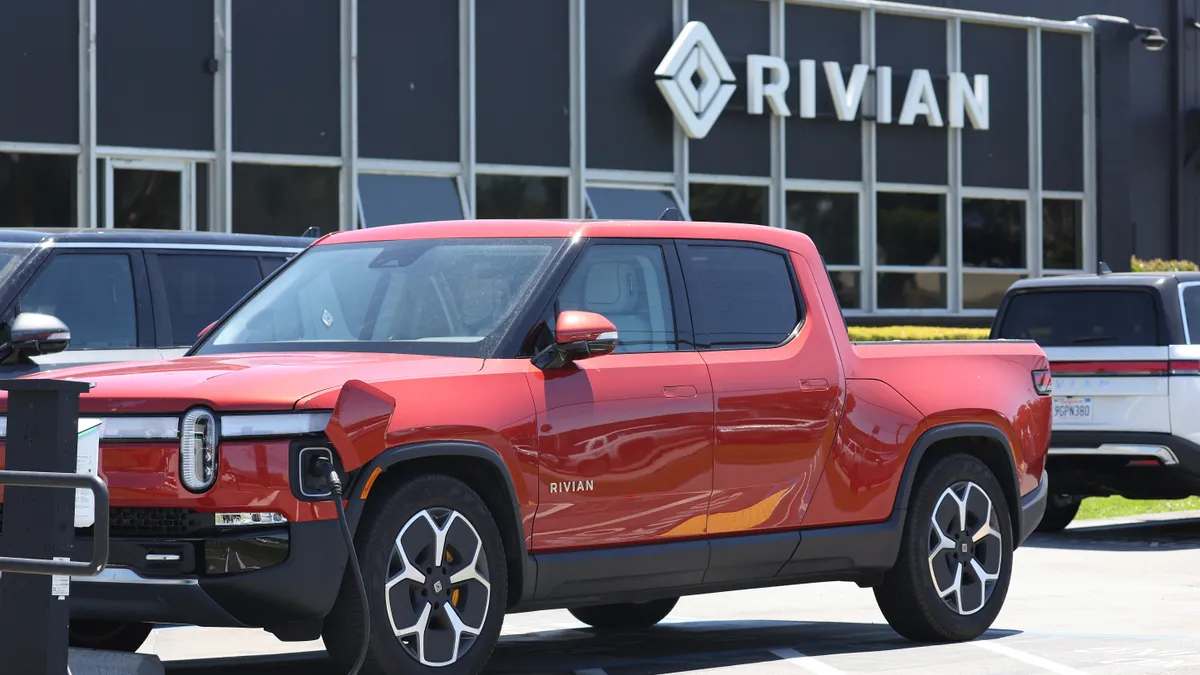Dive Brief:
- Rivian is focused on improving the customer experience through over-the-air software updates that add features and enhancements, the company said in its Q3 2023 letter to investors. It is also leaning on mobile service vans that can handle repairs.
- These efforts are made possible by Rivian’s software-centric design. Vehicles can collect diagnostic data and customer feedback and use that to design over-the-air vehicle updates or help service centers pre-diagnose problems.
- The customer experience focus ties into comments founder and CEO RJ Scaringe made during a Q1 2023 earnings call in May. “In the not-too-distant future, everything will be electric,” he said. “So being electric alone isn't a sufficient differentiation point.”
Dive Insight:
Rivian is leaning into the post-purchase experience to court customers in the fiercely competitive electric vehicle market.
Rivian delivered 15,564 vehicles in Q3, putting it ahead of analyst expectations, but the company is still far behind the 435,059 vehicles Tesla delivered during its own Q3.
“We see [a] very highly concentrated market share with Tesla, but we believe there's a need for alternatives,” Scaringe said during a Q3 earnings call on Nov. 7. “Those alternatives need to be very robustly developed, with vertically integrated software electronics and a deeply seamless user interface.”
One of Rivian’s key advantages is the power of its in-house software capabilities combined with the integration of its hardware and software platforms, according to the letter to shareholders.
This technology lets Rivian update customers’ vehicles remotely through software updates. One recent improvement was adjusting how vehicles handle bumps and dips in the road and reduced their harshness.
Offering improvements via over-the-air updates means the vast majority of customers benefit quickly when changes become available, according to Scaringe.
“Over 90% of our customers update their software within five days of it becoming available,” he said. “It's great to see this level of engagement with our software.”
He noted that Rivian’s fleet of 408 mobile service vehicles also plays an important role in delivering a convenient experience.
“Rather than you as the customer having to deal with the vehicle being dropped off or taken to a service center, we simply come to you,” Scaringe said. “We come to your house or we come to your place of business and perform the service on site. Well over half of all of our service operations are mobile. We expect that to shift into greater than three-quarters.”
The company still has 45 service centers for larger issues, and Rivian’s telematics help minimize frustration during these visits, according to the company’s letter. Each vehicle’s sensors and Rivian’s diagnostics platform are used in tandem to diagnose problems before the visit and speed up the repair process.












